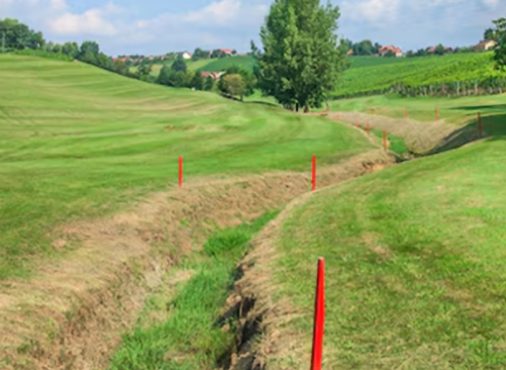Chembur is a residential area in East Mumbai. The area is generally separated by colonies such as Yashwant Nagar, Siddharth Colony, BPCL, Tata Colony, and Rahul Nagar. It is bordered by Govandi in the east, Trombay in the south, Ghatkopar in the north, and BKC and Sion to the west. Chembur is well connected to Mumbai’s economic hubs, making it a popular choice for those working in corporate districts like BKC and Lower Parel. Rustomjee is the main developer here. Rustomjee Balmoral Golflinks is a prominent project in the vicinity.
Chembur History
Prior to reclamation, Chembur was located on Trombay Island’s northwestern corner. Chembur is thought to be the same place as Saimur by Arab writers (915-1137), Sibor in Cosmas Indicopleustes (535), Chemula in the Kanheri cave inscriptions (300-500), Symulla by the author of the Periplus of the Erythraean Sea (247), Symulla or Timulla by Ptolemy (150), and possibly even Perimula by Pliny (A.D. 77). This is, however, controversial. Chembur is also thought to relate to Chevul, the mouth of the Kundalika River on mainland Maharashtra. Later, the area was claimed to have been occupied by a branch of an animal home.
The Bombay Presidency Golf Club was founded in 1827 and later rebuilt to meet international standards. There was no significant activity till the Kurla-Chembur single railway line was completed in 1906 for rubbish trains. In 1924, the route was opened for passenger travel. Chembur opened in the 1930s, following construction activities in the 1920s. It became part of Bombay City in 1945.
Following independence, Chembur was one of the locations where refugee camps were established to settle Sindhi Hindu refugees. Trombay’s industrialization during and after World War II created a demand for housing, resulting in the growth of Chembur. (source)
Major Transportation Routes
Chembur boasts excellent infrastructure that facilitates smooth travel across Mumbai. Here’s an overview of its key transport links:
| Route Type | Details |
| Highways | Connected by the Eastern Express Highway, a lifeline for commuters heading to BKC, South Mumbai, or Thane. |
| Railway Stations | Chembur Railway Station on the Harbor Line links the suburb to CST and Navi Mumbai. |
| Bus Routes | BEST buses provide excellent connectivity to western suburbs, South Mumbai, and Navi Mumbai. |
Chembur’s daily commuters heavily depend on highway links, which is why it has become one of the preferred choices for employment in nearby centres. Also, the Sion-Panvel Expressway has placed Chembur as a gateway to Navi Mumbai and Pune, two incredibly sought-after locations, making it all the more appealing.
Public Transportation Network
Chembur Railway Station
Chembur Station is a railway station in Chembur that serves the Harbour Line of the Mumbai Suburban Railway network. It is near Chembur Market. This station serves as the starting point for one train each morning. It has two platforms that service the northbound and southbound railway lines. Working professionals commute to main business hubs in BKC, Lower Parel, Andheri, Thane, and Navi Mumbai. Students attending colleges and universities within the Mumbai Metropolitan Region (MMR) Families benefit from reduced commute times and easy access to citywide resources.
Roads
The Santacruz-Chembur Link Road, or SCLR, is a 6.45-kilometer (4.01-mile) arterial road in Mumbai that connects the Western Express Highway (WEH) in Santacruz and the Eastern Express Highway (EEH) in Chembur. It includes the city’s first and India’s second double-decker flyovers.
Monorail
The Chembur Monorail Station is connected to the Chembur Railway Station via a skywalk. Chembur is a monorail station and the northern end of Line 1 of the Mumbai Monorail, servicing the Chembur district of Mumbai, India. It opened to the public on February 2, 2014, as part of the first phase of Line 1. The monorail has effectively modernised the mass transit system in Chembur, fuelling the use of modern public transport technologies in the context of the cities’ ecological future.
Upcoming Metro Line for Chembur
Chembur is a significant station on the future Mumbai Metro route 2B, an elevated route that connects D.N. Nagar and Mandale. The route will run through important areas such as Bandra, BKC, Kurla, and Mankhurd. While the first section is slated to open in late 2025, the entire route is scheduled to be operational by 2027. The Chembur Metro Station is currently under construction, The proposed Metro line 2B from BKC to Dahisar will improve connectivity with Chembur by connecting the business hubs of Mumbai and the northern suburbs. The promising insights presented in the MMRDA can be translated into a significant reduction of potential time–35%, to be precise–we need to travel through the city and a shift towards maximising the use of the metro network against private cars.
Chembur has a reliable public transportation system, ensuring hassle-free mobility for residents, whether for work or recreation.
Metro connectivity is one of the best ways for residents. It makes their travel easy, fast, and stress-free, hence making a vulnerable contribution to sustainable lifestyles in cities.
Best Bus Network
The Brihanmumbai Electric Supply and Transport (BEST) buses form the backbone of Chembur’s public transport system:
- Extensive Coverage: BEST buses ply several routes from Chembur to the corporate hubs and other sub-urban areas.
- Affordable Travel: Frequent and cost-effective services make them accessible to all.
- Accessibility: Buses ensure proximity to essential services like hospitals, schools, and shopping centres.
Chembur’s well-developed transport system makes the area one of the most functional and environmentally friendly neighbourhoods.
Business Hub Accessibility
Chembur’s proximity to Mumbai’s major commercial centres makes it a highly sought-after location for professionals:
| Commercial Hub | Distance from Chembur | Travel Time (approx.) |
| Bandra Kurla Complex (BKC) | 10 km | ~30 minutes |
| Fort | 20 km | ~45 minutes |
| Navi Mumbai (Vashi) | 15 km | ~35 minutes |
Advantages of Business Connectivity in Chembur
- Because of the short travelling time, the workers can do more work in less time, resulting in a “work-life balance.”
- The availability of multiple connectivity options ensures smoother commutes, even during busy traffic hours, making daily travel less stressful.
- Its accessibility to BKC has ensured that Chembur has become a preferred residential hub for corporate professionals.
With BKC evolving into Mumbai’s financial capital, there has been a greater demand for Chembur properties than ever before, cementing its reputation as a vital contributor to the city’s growth.
Future Infrastructure Projects
Chembur is poised for further growth, thanks to upcoming infrastructure initiatives:
Impact on Real Estate
Chembur’s connectivity has played a pivotal role in its emergence as a real estate hotspot:
- Property Value Appreciation: Chembur’s property prices have increased by 20% in the last decade due to access to employment centres and developing infrastructure.
- Rental Market Trends: High demand for rental properties has resulted in attractive yields of 3–5%, making it a lucrative investment option.
Read Also: Why Rustomjee Ocean Vista is a prime investment opportunity in luxury living?
Local Commuting Options
Chembur offers a robust internal transportation system that ensures residents can commute with ease:
- Autorickshaws and Taxis: These services run 24/7 and offer an easy, fast, and relatively affordable way to cover short distances.
- Last-Mile Connectivity: Feeder services effectively bridge main transport hubs and local destinations, ensuring access to every corner of the locality. This convenience reduces reliance on private vehicles, promoting eco-friendly travel.
- Ride-Sharing Services: Popular and cost-effective, ride-sharing platforms offer on-demand transportation with the added convenience of door-to-door service, making them a preferred choice for many commuters.
- Resident Perks: An integrated transport system can help you get to your destination without much fuss, thus meeting the busy lifestyle of urban residents. This accessibility enhances the area’s appeal, making it an attractive choice for professionals and families alike.
Emergency Services Access
The availability of emergency services is one of the significant factors determining a particular neighbourhood’s safety and convenience. Chembur stands out by offering seamless access to essential facilities:
- Healthcare Facilities: Numerous hospitals and clinics provide prompt medical care in case of emergencies.
- Fire and Police Stations: Multiple fire stations and police outposts ensure rapid response time, making the area safe.
Read Also: The role of architecture and landscaping in modern luxury homes
Educational Institution Connectivity
Chembur is a hub for quality education, offering convenient access to diverse learning institutions:
- Schools: The area boasts several well-known schools offering quality education and convenient transport options.
- Colleges: Education facilities within the area range include higher learning institutions that meet different academic needs so students can stay within reach for quality education.
- Coaching Centres: Many institutes for academic coaching and competitive examinations are situated in a way that minimises students’ travelling time.
Conclusion
Chembur stands as a shining example of Mumbai’s growth, blending unmatched connectivity with a vibrant lifestyle. With its strategic location, robust infrastructure, and premium housing options like Rustomjee Chembur, it continues to attract families and professionals alike.
Elevate your living experience—explore Rustomjee Chembur today and embrace the ultimate in urban living!
FAQs
- Why is Chembur famous?
Chembur is famous for its vibrant cultural scene, growing real estate market, and historical significance within Mumbai. It’s known for its blend of traditional and modern elements, offering a mix of cultural sites, recreational spaces, and a thriving residential area.
- Is Chembur expensive?
While not as pricey as some of Mumbai’s most desirable locations, such as Bandra or South Mumbai, Chembur remains a luxury residential locale, with property prices that can be relatively high. It’s a popular choice for individuals wanting a balance of tradition and contemporary, with decent connectivity and lifestyle amenities.
- How long does it take to reach BKC from Chembur?
Taking approximately 30 minutes from Chembur through the Eastern Express Highway, BKC is an ideal destination for working individuals and businesspeople.
- Which is the nearest metro station to Chembur?
The nearest station is the Chembur Metro Station, further connected to the functional Metro Line No. 1. Additional potential metro extensions are planned, guaranteeing more effective connections and easier commuting.
- What are the main roads connecting Chembur to other parts of Mumbai?
The locality can effortlessly connect with central, western, and Navi Mumbai through the Eastern Express Highway and Sion-Panvel Expressway.
- How far is the international airport from Chembur?
The Chhatrapati Shivaji Maharaj International Airport is about 12 km away by road. Depending on traffic, it may take 25-30 minutes, making it a befitting hub for regular flyers.
- Is Chembur well-connected to South Mumbai?
Yes, Chembur is easily accessible from South Mumbai, primarily through the Eastern Freeway, which has also reduced travelling time with additional support from the monorail for better intra-city transportation.








